Learning Fun on the Fridge!
With schools closed and kids at home, parents are looking for resources to keep their kids busy. Thanks to Dowling Magnets, fun – and learning – is just a step away, on your very own fridge! We’re sharing some simple math and literacy activities that you and your kids can do together, using refrigerator magnets, including:
Math
- Counting
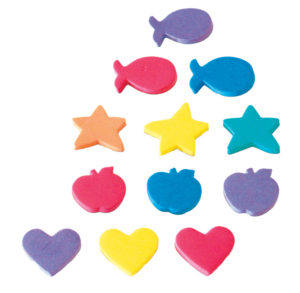 Place one Foam Fun™ Magnet Counter (any shape or color) on the fridge, touch it, and say “one” aloud. Add another, touch both, and say “two.” Continue until you think your child grasps the concept. Then place several magnets on the fridge and ask how many there are. Add another and ask again. Take two or three away and ask again.
Place one Foam Fun™ Magnet Counter (any shape or color) on the fridge, touch it, and say “one” aloud. Add another, touch both, and say “two.” Continue until you think your child grasps the concept. Then place several magnets on the fridge and ask how many there are. Add another and ask again. Take two or three away and ask again.
- Sorting
Place a variety of Foam Fun™ Magnet Counters on the fridge and ask your child to move all of the blue shapes to the top of the fridge. Repeat this step for at least a few other colors. Regroup the shapes and ask your child to find all the stars. Repeat but focus on a different shape next.
Do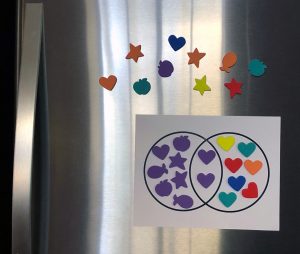 wnload our free Venn Diagram template and post it horizontally on the fridge. Show your child how to place a variety of purple shapes in the left part of the diagram and several different colors of heart magnets (purple included) in the right part of the diagram. Explain that the center area of the diagram is where to place the magnets that match the features represented on BOTH sides of the diagram. Guide children to place all the PURPLE HEARTS in the center area of the diagram. Next, challenge kids to come up with (and complete) a new “sort” of their own, focusing on a different shape and color of the Foam Fun™ Magnet Counters, on the Venn diagram template!
wnload our free Venn Diagram template and post it horizontally on the fridge. Show your child how to place a variety of purple shapes in the left part of the diagram and several different colors of heart magnets (purple included) in the right part of the diagram. Explain that the center area of the diagram is where to place the magnets that match the features represented on BOTH sides of the diagram. Guide children to place all the PURPLE HEARTS in the center area of the diagram. Next, challenge kids to come up with (and complete) a new “sort” of their own, focusing on a different shape and color of the Foam Fun™ Magnet Counters, on the Venn diagram template!
Place Value
P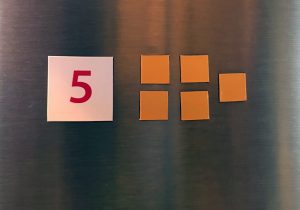 lace any Magnetic Numeral on the fridge, and then show your child how to create that number using Magnetic Base Ten pieces. For example, if you’ve placed the numeral “32” on the fridge, place three base ten “rods” (representing 10 each) and two small base ten “units” (each representing one) on the fridge next to the numerals. Once your child grasps the concept, have him/her use the base ten magnets to visually represent greater (3-digit) numbers. (Each large square base ten magnet, called a “flat,” represents 100.) YOU can even display a number value using base ten magnets and have your child find the matching Magnetic Numerals.
lace any Magnetic Numeral on the fridge, and then show your child how to create that number using Magnetic Base Ten pieces. For example, if you’ve placed the numeral “32” on the fridge, place three base ten “rods” (representing 10 each) and two small base ten “units” (each representing one) on the fridge next to the numerals. Once your child grasps the concept, have him/her use the base ten magnets to visually represent greater (3-digit) numbers. (Each large square base ten magnet, called a “flat,” represents 100.) YOU can even display a number value using base ten magnets and have your child find the matching Magnetic Numerals.
Addition and Subtraction
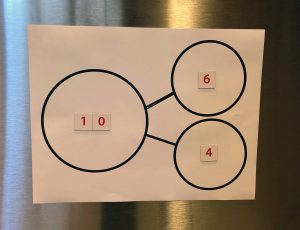 Using Magnetic Numerals, set up simple problems using the correct operations signs, and challenge your kiddo to solve them! Download our free Number Bond Master, stick it on the fridge, and place the matching Magnetic Numerals in the circles to provide another visual of the same problem. (Hint: the sum goes in the larger circle, and the addends—the numbers you add together to get that sum—go in the smaller circles.) Bonus parent points: your kids will be impressed that you have a number bond just like the ones in their math workbooks.
Using Magnetic Numerals, set up simple problems using the correct operations signs, and challenge your kiddo to solve them! Download our free Number Bond Master, stick it on the fridge, and place the matching Magnetic Numerals in the circles to provide another visual of the same problem. (Hint: the sum goes in the larger circle, and the addends—the numbers you add together to get that sum—go in the smaller circles.) Bonus parent points: your kids will be impressed that you have a number bond just like the ones in their math workbooks.
Literacy
- Letter Identification
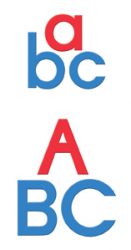 Help your little one learn their letters with Foam Fun™ Magnet Letters! Beginning with the capital letters, slowly place the magnetic letters on the fridge, introducing each letter by name. Arrange the letters in alphabetical order. Together, sing the ABC song, touching each letter as you sing its name. Sing it together again but have YOUR CHILD be the “letter toucher” this time. Next, see if he/she can find a random letter by name when you call it out. (Challenge them to do this without singing to themselves as they get to the letter in the song.) When your child can recognize and identify each uppercase letter magnet by name, begin introducing lowercase letters too.
Help your little one learn their letters with Foam Fun™ Magnet Letters! Beginning with the capital letters, slowly place the magnetic letters on the fridge, introducing each letter by name. Arrange the letters in alphabetical order. Together, sing the ABC song, touching each letter as you sing its name. Sing it together again but have YOUR CHILD be the “letter toucher” this time. Next, see if he/she can find a random letter by name when you call it out. (Challenge them to do this without singing to themselves as they get to the letter in the song.) When your child can recognize and identify each uppercase letter magnet by name, begin introducing lowercase letters too.
- Letter-Sound Correspondence
Once kids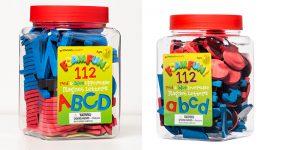 know the letter names, you can help them start to learn phonics (the relationships between letters and the sounds those letters make). Point to a Foam Fun™ Magnet Letter, say its name, and then say its sound aloud slowly several times, having your child repeat the sound. Next, slowly say aloud a word that starts with that sound. Finally, challenge your child to say aloud MORE words that start with the same sound.
know the letter names, you can help them start to learn phonics (the relationships between letters and the sounds those letters make). Point to a Foam Fun™ Magnet Letter, say its name, and then say its sound aloud slowly several times, having your child repeat the sound. Next, slowly say aloud a word that starts with that sound. Finally, challenge your child to say aloud MORE words that start with the same sound.
- Word Building
 Print our free Elkonin Box Masters and stick the two-box version horizontally on your fridge. Slowly sound out a simple two-letter word such “at”. As you do, touch (with your fingertip) each box on the paper master as you say aloud each sound. Repeat and ask your child to do the same. Once your child understands the basic concept (each box represents an individual sound), repeat the verbal activity with more words such as “in,” “on,” and “it”. You can begin to do similar activities using easy three-letter words with the three-box version of the Elkonin Box Master, too.
Print our free Elkonin Box Masters and stick the two-box version horizontally on your fridge. Slowly sound out a simple two-letter word such “at”. As you do, touch (with your fingertip) each box on the paper master as you say aloud each sound. Repeat and ask your child to do the same. Once your child understands the basic concept (each box represents an individual sound), repeat the verbal activity with more words such as “in,” “on,” and “it”. You can begin to do similar activities using easy three-letter words with the three-box version of the Elkonin Box Master, too.
Eventually when your child is ready, place a magnetic letter in each box (instead of tapping the box with your finger) as you pronounce each sound. Let your child choose some easy words to sound out and spell this way as well.
- Vowels vs. Consonants
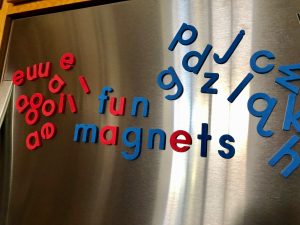 Understanding the difference between vowels and consonants is a key early literacy skill. Our color-coded Foam Fun™ Magnet Letters (red vowels and blue consonants) provide visual cues that help kids learn the difficult concepts of vowels and consonants. Start by finding all the vowels and saying aloud each one’s name and sound(s). Explain that each vowel makes at least two sounds—a sound that sounds like its name plus other more unique sounds. Repeat this with consonants. Explain that consonants do not say their names exactly when it comes to making sounds and that each consonant is much less likely (than a vowel) to make more than one sound. Then use the Foam Fun™ Magnet Letters to begin building simple words. As you do, remind your child which letters are vowels, and which are consonants.
Understanding the difference between vowels and consonants is a key early literacy skill. Our color-coded Foam Fun™ Magnet Letters (red vowels and blue consonants) provide visual cues that help kids learn the difficult concepts of vowels and consonants. Start by finding all the vowels and saying aloud each one’s name and sound(s). Explain that each vowel makes at least two sounds—a sound that sounds like its name plus other more unique sounds. Repeat this with consonants. Explain that consonants do not say their names exactly when it comes to making sounds and that each consonant is much less likely (than a vowel) to make more than one sound. Then use the Foam Fun™ Magnet Letters to begin building simple words. As you do, remind your child which letters are vowels, and which are consonants.
- Silly Sentence Construction
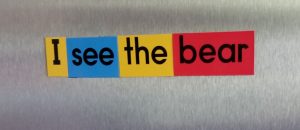 If kids can read easy words, challenge them to put those words together to create sentences! Using our Sentence Building Magnets, start with simple two- or three-word sentences. As children progress, teach them parts of speech (color-coded), the role each part of speech plays, and the “basic formula” for constructing a sentence (noun plus verb). When kids are ready to extend their learning, have them add more parts of speech (such as adjectives, adverbs, conjunctions, prepositions, etc.) to make the sentences a lot more interesting…and funny! To quickly check how they’re doing, ask kids to build a sentence using specified parts of speech magnets. For example, ask them to create a sentence made of two nouns, one verb, a conjunction, and an adjective.
If kids can read easy words, challenge them to put those words together to create sentences! Using our Sentence Building Magnets, start with simple two- or three-word sentences. As children progress, teach them parts of speech (color-coded), the role each part of speech plays, and the “basic formula” for constructing a sentence (noun plus verb). When kids are ready to extend their learning, have them add more parts of speech (such as adjectives, adverbs, conjunctions, prepositions, etc.) to make the sentences a lot more interesting…and funny! To quickly check how they’re doing, ask kids to build a sentence using specified parts of speech magnets. For example, ask them to create a sentence made of two nouns, one verb, a conjunction, and an adjective.
For even more fun, add more children and a timer to make a quiz game with our Sentence Building Magnets! “Okay kids, you have 30 seconds to build a sentence with one noun, two verbs, one conjunction, one adjective, and one adverb…GO!” (Tip: write the set of specified parts of speech/constraints for each sentence challenge on an index card FIRST and post the card on the fridge for kids to quickly reference during each round of the quiz game.)
- Reading Fluency & Sentence Punctuation
Now it’s YOUR turn to build! Use the Sentence Building Magnets to create a complex sentence. Ask your child to read it aloud to you multiple times, as he/she uses a different emotion each time (happy, angry, silly, shy, etc.) or while your child pretends to be a favorite character! You can change the punctuation of the sentences too (for example, change a statement into a question or add a comma somewhere) and have kids say the sentences aloud differently yet again to match the new punctuation. 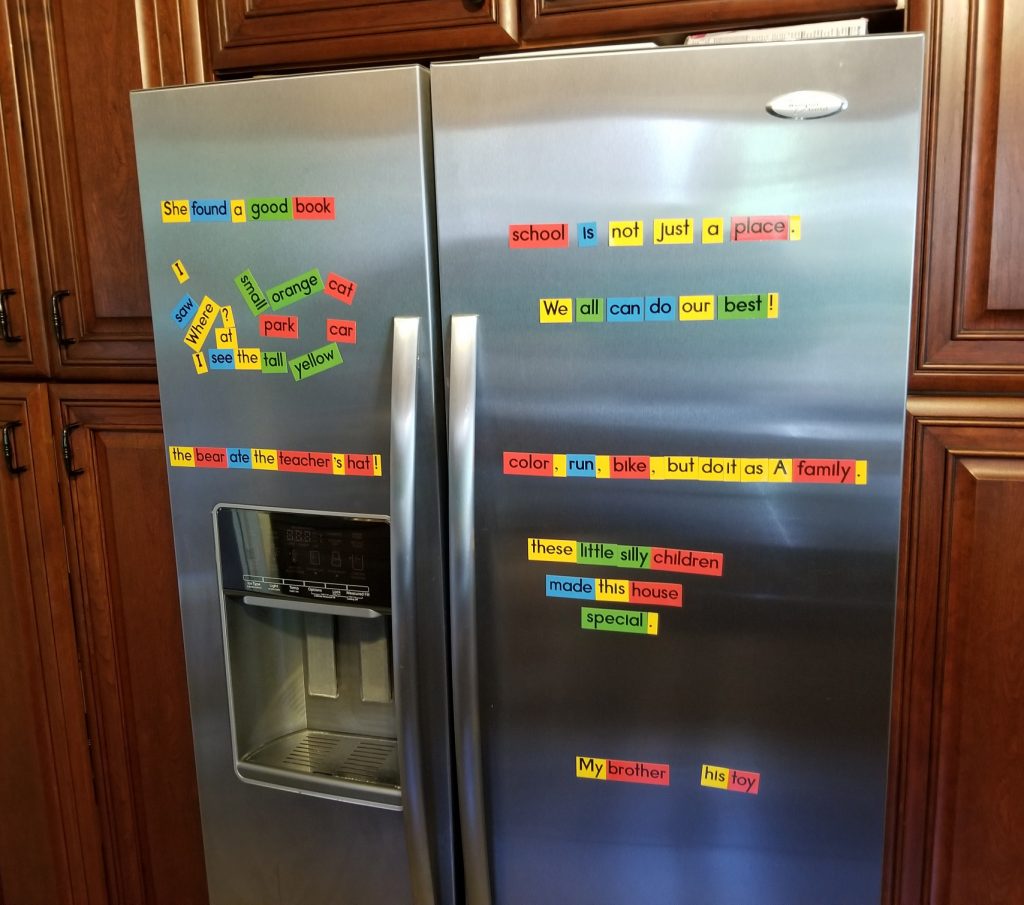
With a few cool magnetic products, you can turn your kitchen into a learning center, with your fridge at the hub! And if your fridge is not magnetic, not to worry! Our Fun with Letters Magnet Activity Set includes a double-sided magnetic board and magnetic letter tiles for practicing letter names, phonics, word building, and more.
Tags: home school magnets , learning on the fridge , school at home , teaching at home
Share This:
